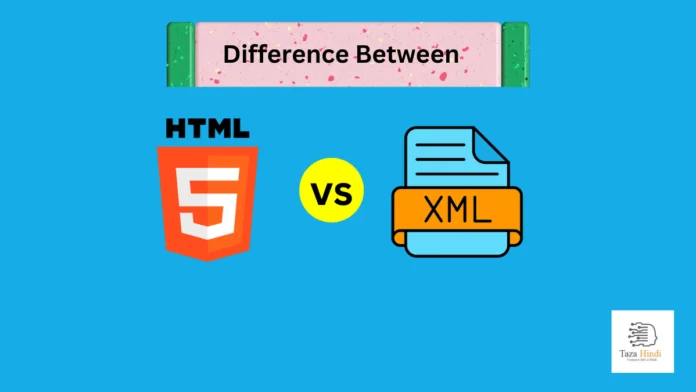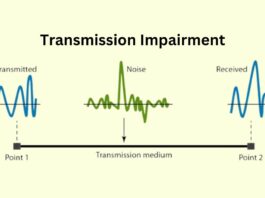In the world of web development and data management, two terms that often come up are HTML and XML. Both HTML and XML are markup languages, but they serve different purposes and have distinct characteristics. In this tutorial, you will get quick overview about what is HTML and XML, their purposes, applications, how they are used to structure and store data, and main difference between HTML and XML.
What is HTML?
HTML, or Hypertext Markup Language, is the standard markup language used for creating and structuring content on the web. It provides a set of predefined tags and attributes that define the structure, formatting, and presentation of web pages. HTML is primarily focused on how the content is displayed in a web browser.
Purpose of HTML
The purpose of HTML is to structure and present content on the web in a standardized manner. It allows web developers to define headings, paragraphs, lists, tables, images, links, and other elements to create a visually appealing and well-organized web page. HTML provides the foundation for creating user interfaces, displaying text and media, and enabling interactivity on the web.
Applications where HTML is commonly used
HTML is extensively used in various applications and industries. It is the core language for building websites, web applications, and online documents. It is also used in email templates, content management systems, and e-commerce platforms. HTML is vital for delivering information and creating engaging experiences on the internet.
How HTML is used to structure and present content on the web ?
HTML uses a set of tags to structure and define the elements of a web page. Tags are enclosed in angle brackets (< >) and can have attributes that provide additional information about the element. HTML tags define the headers, paragraphs, links, images, forms, and other components of a web page. Browsers interpret the HTML code and render it as a visual representation for users to interact with.
Also Read : How to make a website using HTML
Role of HTML in creating web pages and user interfaces
HTML plays a critical role in creating web pages and user interfaces. It provides the structure and layout of a page, defines the semantic meaning of content, and enables the inclusion of media, such as images and videos. HTML works in conjunction with other technologies like CSS (Cascading Style Sheets) and JavaScript to enhance the visual presentation and interactivity of web pages.
What is XML?
XML, or Extensible Markup Language, is a flexible markup language that focuses on describing and structuring data. Unlike HTML, XML does not specify how the data should be displayed but rather focuses on defining the structure and relationships between different elements of the data. XML provides a set of rules for encoding documents in a format that is both human-readable and machine-readable.
Purpose of XML
The purpose of XML is to store and transport structured data in a format that is platform-independent and easily interpretable by different systems. XML allows users to define their own custom tags and document structures, making it highly adaptable and extensible. XML is primarily concerned with data representation and exchange.
Uses of XML
XML has a wide range of uses across various domains. It is commonly used for data storage and transmission in web services, APIs, and databases. XML is also employed in document management systems, data interchange formats, configuration files, and data representation in scientific and research applications. Its versatility and self-descriptive nature make it suitable for a wide range of data-centric tasks.
Also Read : How to Create a Website from Scratch using Python
How XML is used to store and transport structured data?
XML uses tags to define elements and their hierarchical relationships, creating a tree-like structure for the data. Each element can contain text, attributes, and nested elements. XML documents adhere to a set of rules called a Document Type Definition (DTD) or an XML Schema, which define the allowed structure and data types. XML data can be stored in files or transmitted over networks using various protocols.
Versatility of XML in representing various types of data
One of the key advantages of XML is its versatility in representing various types of data. Unlike HTML, which is primarily focused on web page structure and presentation, XML allows users to define their own custom tags and document structures. This flexibility makes XML suitable for representing complex and diverse data sets. XML can represent textual data, numerical data, hierarchical data, metadata, configuration settings, and much more. It can be used to define and exchange data in a format that is both human-readable and machine-readable, enabling seamless interoperability between different systems.
Also Read : How to Convert String to Enum in C#
Difference between HTML and XML
While both HTML and XML are markup languages, they have distinct characteristics and purposes. Here are some key differences between HTML and XML:
| Factors | HTML | XML |
| Purpose | HTML is used for structuring and presenting content on the web. | XML focuses on describing and structuring data. |
| Presentation vs. Data | HTML is concerned with how the content is displayed in a web browser, emphasizing visual aspects and user interaction. | XML, on the other hand, is focused on the structure, relationships, and semantics of data, without specifying its presentation. |
| Tags and Attributes | HTML uses predefined tags and attributes to structure and format web content. | XML allows users to define their own custom tags and attributes to represent data according to their specific needs. |
| Data Validation | HTML does not enforce strict data validation rules, as its main focus is on visual presentation. | XML, however, can use Document Type Definitions (DTD) or XML Schemas to define the allowed structure and data types, ensuring data validity and consistency. |
| Interoperability | HTML is primarily used in web browsers and web-related technologies. | XML, on the other hand, can be used across different systems and platforms, enabling data interchange and integration between disparate systems. |
Also Read : How to create a website without paying any money
Conclusion
HTML and XML are both markup languages, but they serve different purposes in web development and data management. HTML focuses on structuring and presenting content on the web, while XML is primarily concerned with describing and structuring data. HTML is used to create web pages and user interfaces, while XML is used for storing, transporting, and exchanging structured data. Understanding the differences between HTML and XML is crucial for web developers, data analysts, and anyone working with data management, as it helps in choosing the appropriate language for specific tasks and ensures effective data representation and interoperability.
FAQs
-
Can XML be used for web page development?
XML can be used for web page development, but it requires additional technologies such as XSLT (Extensible Stylesheet Language Transformations) to transform XML data into HTML for display in web browsers.
-
Can HTML and XML be used together?
Yes, HTML and XML can be used together. XML can be embedded within HTML documents to represent structured data, and HTML can be used to define the visual presentation of XML data.
-
Is XML replacing HTML?
No, XML is not replacing HTML. While XML is widely used for data representation and exchange, HTML remains the standard markup language for web page development and display.
-
Which language is easier to learn, HTML or XML?
HTML is generally considered easier to learn, as it has a more limited set of tags and focuses on visual presentation. XML, with its flexibility and customizability, may require a deeper understanding of data structures and document schemas.
-
Can XML documents be displayed directly in web browsers?
No, XML documents are not typically displayed directly in web browsers. They require additional processing and transformation, often using XSLT or JavaScript, to convert XML data into a format that can be rendered and displayed by web browsers.



